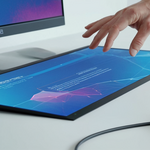
The phenomenon of lost and stolen mobile devices has become one of the most pressing cybersecurity challenges of our time, with profound implications for the protection of sensitive financial and medical information. In 2025, mobile devices serve as repositories for irreplaceable personal and professional data, yet the vulnerability of these devices to loss, theft, and unauthorized access remains inadequately addressed by most users and organizations. This comprehensive analysis examines the multifaceted challenge of data loss from lost phones, focusing specifically on how encrypted file storage solutions and preventative measures can protect financial and medical documents from exposure, breach, and permanent loss. By understanding the landscape of mobile data threats, implementing foundational security measures, leveraging advanced encryption technologies, establishing robust backup systems, and maintaining awareness of regulatory requirements, individuals and organizations can significantly mitigate the catastrophic consequences of mobile device loss.
The Escalating Crisis of Lost Phone Data: Understanding the Current Threat Landscape
The problem of lost and stolen mobile devices represents a critical juncture in the evolution of data security. According to recent statistics, approximately one in ten smartphone owners in the United States have experienced device theft, with the concerning reality that sixty-eight percent of stolen phones are never recovered. However, what distinguishes this era from previous periods is not merely the frequency of device loss but the extraordinary concentration of sensitive data that contemporary smartphones contain. These devices now function as comprehensive digital wallets, storing everything from banking credentials and investment information to detailed medical records, pharmaceutical prescriptions, and insurance documentation. The convergence of these factors creates unprecedented risk scenarios where a single lost device can precipitate cascading consequences affecting financial stability, medical privacy, and personal security.
The types of information at risk span a remarkably broad spectrum of sensitive data categories. Financial information stored on lost devices typically includes banking credentials, payment card numbers, cryptocurrency wallet information, brokerage accounts, and transaction histories. Medical information encompasses appointment schedules, prescription records, laboratory results, imaging reports, diagnostic codes, insurance policy details, and increasingly, comprehensive digital health records integrated through applications like Apple Health. Additionally, lost phones often contain ancillary data that can facilitate identity theft, including social security numbers, driver’s license information, passport details, and addresses that can enable broader attacks on financial institutions and healthcare providers. The scope of potential exposure creates a complex risk environment where prevention and rapid response mechanisms become essential rather than optional components of data protection strategy.
Data loss from mobile devices occurs through multiple vectors that extend beyond simple theft. According to comprehensive data loss research, misplaced devices represent the most common scenario, accounting for approximately sixty-four percent of all incidents, while home invasions and pickpocketing compose significant secondary concerns. What distinguishes device loss from other cybersecurity incidents is the physical component—the attacker does not require sophisticated hacking skills or remote access capabilities; possession of the physical device provides immediate access to an extraordinary amount of personal information. The average recovery time for misplaced devices extends to 4.6 days, during which an attacker with the device possesses unrestricted access to sensitive files, applications, and potentially the networks to which the device can connect. This temporal window represents the most critical period for data protection, during which immediate actions can determine whether sensitive financial and medical information remains secure or becomes irrevocably compromised.
The financial and reputational consequences of such breaches extend far beyond the immediate loss of the device itself. Healthcare organizations have experienced unprecedented costs associated with data breaches, with the 2024 Change Healthcare cyberattack exposing sensitive information from up to 190 million people, representing the largest healthcare data breach in United States history. The financial impact continues to escalate, with healthcare organizations bearing average data breach recovery costs of $9.77 million per incident, representing the fourteenth consecutive year that healthcare has topped the list of industries experiencing the most expensive breach recoveries. When a mobile device containing unencrypted medical records is lost or stolen, organizations face not only the direct costs of breach notification and regulatory fines but also the long-term reputational damage that undermines patient trust and competitive positioning.
Understanding Data at Risk: What Gets Lost on Mobile Devices and the Consequences of Exposure
To effectively prevent data loss from lost phones, one must first comprehend the specific categories of financial and medical data that modern mobile devices contain and the particular vulnerabilities of this data when devices become inaccessible to their legitimate owners. Financial data stored on mobile devices represents increasingly comprehensive information about individual economic situations. Many individuals now store their banking applications, payment card information through digital wallets like Apple Pay and Google Pay, cryptocurrency exchange credentials, investment account access, and detailed transaction records directly on their mobile devices. The proliferation of financial technology applications has accelerated this trend, making mobile devices the primary interface through which individuals manage their monetary assets. When such a device is lost, thieves gain immediate access not only to stored credentials but potentially to active sessions where authentication has already been completed, enabling direct transfer of funds or fraudulent purchases.
Medical data vulnerability presents equally severe risks with additional regulatory complications. Increasingly, healthcare providers are enabling patients to download comprehensive medical records directly onto mobile devices through systems like Apple’s Health app, which now connects patients to more than twelve thousand healthcare locations across the United States, Canada, and the United Kingdom. These downloaded records typically include allergies, clinical vitals, medical conditions, immunization records, laboratory results, medication information, and procedural histories. While these applications implement encryption on the device itself, a lost phone containing such records without additional layer encryption or access control mechanisms creates exposure of Protected Health Information, which triggers regulatory obligations, breach notification requirements, and potential liability under HIPAA and state privacy laws. The sensitivity of medical data is particularly acute because it cannot be changed or modified in the way financial credentials can be reset; an individual cannot grow new fingerprints or obtain new genetic information, making medical data breaches uniquely permanent in their consequences.
The distinction between data encrypted at rest versus data accessible in memory or application state becomes critically important in lost phone scenarios. Research indicates that over half of mobile devices in use globally operate on outdated or unsupported systems, exposing them to critical vulnerabilities. When a device runs old operating system versions, the encryption mechanisms that protect data at rest may contain exploitable flaws, or the device may lack modern encryption capabilities entirely. Furthermore, data can be exposed through multiple vectors beyond simple file-level access: screenshots and clipboard data can capture sensitive information without traversing encrypted storage; sideloaded applications may access protected content through exploited permissions; and unencrypted backups to cloud storage services can synchronize sensitive files outside corporate or individual control. The multifaceted nature of these exposure vectors means that comprehensive protection requires not merely encrypting storage but controlling data flow across multiple dimensions of device operation.
The financial implications of medical or financial data breaches extend into domains many individuals never anticipate. When identity thieves obtain healthcare information, they frequently use it to create fraudulent insurance claims, obtain medications, or access medical services that generate bills charged to the legitimate individual. The Equifax breach, which compromised the personal data of 148 million Americans including social security numbers, driver’s license numbers, and dates of birth, exemplified how lost personal information can generate years of identity theft consequences. Individuals must then navigate complex processes of credit monitoring, dispute resolution, and potentially fraud recovery that consume substantial time and create ongoing uncertainty about the extent of compromise. Organizations similarly face not only direct recovery costs but also substantial indirect expenses related to lost business, with research indicating that lost business accounts for thirty-eight percent of total data breach costs as customers lose confidence in the organization’s data protection capabilities.
Pre-Loss Prevention: Foundational Mobile Security Measures and Preparatory Actions
The most effective approach to preventing data loss from lost phones prioritizes preparation and prevention before any device loss occurs. Foundational security measures must be implemented as a matter of routine practice rather than emergency response to crisis situations. The first critical measure involves establishing robust device-level access controls that immediately impede unauthorized access should a device be lost or stolen. Modern mobile devices offer multiple authentication options ranging from basic PIN codes to advanced biometric systems. For financial and medical document protection, security experts recommend establishing authentication requirements that extend beyond simple swipe unlocks. A six-digit PIN represents the minimum acceptable security level, though longer numeric codes or alphanumeric passwords provide substantially greater security by increasing the computational complexity of brute-force attacks How to change and remove screen lock on Android. Screen lock settings should be configured to engage immediately or within an extremely brief period—ideally between thirty seconds and two minutes—ensuring that even momentary device abandonment triggers authentication requirements.
Biometric authentication has emerged as a particularly effective mechanism for balancing security with usability on mobile devices. Fingerprint recognition and facial recognition systems leverage unique biological characteristics that cannot be easily replicated or compromised if the underlying security architecture is robust. Modern biometric systems employ sophisticated liveness detection capabilities that prevent attackers from bypassing authentication using photographs, molds, or other spoofing techniques. The critical advantage of biometric systems is that they store encrypted digital templates on secure enclaves—isolated hardware components completely separated from the main operating system—rather than actual biometric data images. This architectural approach ensures that even if an attacker physically accesses device storage, they cannot extract meaningful biometric information. For users managing sensitive financial or medical information, enabling biometric authentication provides psychological confidence that device access, while convenient for legitimate use, remains substantially protected against unauthorized access.
Two-factor or multifactor authentication represents a second layer of protection that dramatically increases the security posture of accounts containing sensitive information. This authentication approach combines something the user knows—a password or PIN—with something the user possesses—typically a mobile device or authentication app—or something the user is—biometric data. For financial accounts, regulatory guidance increasingly mandates or strongly recommends implementation of multifactor authentication, particularly for transactions accessing or modifying sensitive data. When a lost phone is also linked as a secondary authentication factor for banking or healthcare accounts, the risks escalate substantially; attackers with both the device and compromised primary credentials can potentially gain complete account control. Forward-thinking individuals should establish multifactor authentication using authentication apps such as Google Authenticator or Authy rather than relying on SMS messages for second factors, as SMS-based authentication has become increasingly vulnerable to interception by sophisticated threat actors.
Strong password management practices form the foundation upon which all other security measures build, yet represent an area of systematic weakness for most individuals. Industry research indicates that the average person maintains approximately 170 passwords across different accounts. This password proliferation creates impossible cognitive burden for memorization, leading most individuals to engage in security-undermining practices such as reusing passwords across multiple systems, choosing passwords based on personal information that is easily guessed, or storing passwords in unencrypted text files. The solution involves implementing dedicated password management applications that generate cryptographically secure random passwords and store them in encrypted vaults. Premium password managers employ military-grade encryption algorithms such as AES-256, zero-knowledge architecture that ensures even the password management company cannot access stored credentials, and cross-platform synchronization that makes strong passwords accessible across devices. When a mobile device is lost but the individual has utilized a password manager, the compromised device becomes merely one attack vector among many, rather than a skeleton key providing access to all financial and medical systems.
Establishing comprehensive backup systems before device loss occurs represents perhaps the most underutilized preventative measure despite its extraordinary importance. The fundamental principle underlying backup strategies is that data exists in multiple locations, ensuring that loss of one copy does not constitute permanent data loss. Cloud storage services have evolved substantially to address mobile backup requirements, offering encrypted storage where users can synchronize files automatically across devices. Services such as Proton Drive implement end-to-end encryption where files are encrypted on the user’s device before uploading to cloud storage, ensuring that the cloud storage provider itself cannot access file contents. Other services like OneDrive integrate directly with Microsoft 365 and offer personal vault features that apply additional encryption and biometric access controls to particularly sensitive documents. For individuals managing sensitive financial or medical documents, the appropriate backup strategy involves both automatic synchronization of files to cloud storage and regular manual backups to offline encrypted storage, creating redundancy that protects against both device loss and cloud service compromise.

Device-Level Protection Strategies: Hardware and Software Security Architecture
Modern mobile devices offer increasingly sophisticated built-in encryption mechanisms that provide a first line of defense for data stored on devices. Android devices running Android 9.0 and later implement file-based encryption (FBE) that encrypts individual files using AES-256-XTS encryption with unique file encryption keys derived from a primary key. Older Android devices and those that have not received recent updates employ full-disk encryption (FDE) that encrypts the entire user data partition with similar encryption algorithms. The distinction matters because FBE-based devices support “Direct Boot” functionality, allowing devices to receive calls and alarms before the user enters their unlock credentials, whereas FDE-based devices remain locked until credentials are provided. Both encryption approaches protect data at rest, meaning data stored on the device remains inaccessible to someone without the correct unlock credentials. However, these built-in encryption mechanisms only function effectively if users have established a screen lock PIN, pattern, or password; devices that rely on simple swipe unlocks or no lock at all provide no encryption protection.
Samsung Knox represents an advanced mobile security platform that extends beyond basic encryption to provide comprehensive hardware-level security controls. Samsung Knox includes a Secure Folder feature that creates an encrypted container within the device, isolating sensitive applications and files from the rest of the system. Files and apps within Secure Folder are encrypted using defense-grade Samsung Knox security platform mechanisms and can be protected with biometric or PIN access independent from device unlock credentials. This approach allows users to maintain a dual-use device where casual personal applications coexist with a separate encrypted workspace containing financial applications, medical records, and other sensitive documents. The security architecture ensures that even if an attacker gains access to the primary device, Secure Folder remains protected by independent encryption and authentication mechanisms.
Mobile Device Management (MDM) solutions extend device-level security through centralized policy administration and enforcement capabilities. Organizations deploying BYOD policies or managing company-issued mobile devices often utilize MDM platforms that enable IT administrators to set security baselines, enforce encryption requirements, mandate screen lock settings, and remotely manage device configurations. MDM systems can implement policies that restrict which applications can be installed, require specific authentication mechanisms, enforce VPN connectivity for sensitive data access, and prevent unsecured data storage. Critically, MDM platforms provide remote lock and remote data wipe capabilities that represent the most important functionality when devices are lost or stolen—rather than hoping a lost device can be located or recovered, authorized administrators can immediately render the device inaccessible and erase all data, preventing unauthorized access to sensitive information.
Zero Trust Architecture represents an increasingly influential security framework that applies to mobile device environments despite its origination in broader network security contexts. Zero Trust principles abandon the assumption that devices connected to corporate networks or personal devices operating in specific locations inherently deserve trust; instead, every access request to sensitive resources requires continuous authentication and authorization based on current device posture and user identity. In the mobile context, Zero Trust principles mean that applications accessing sensitive financial or medical data implement continuous verification rather than relying on a single initial authentication. This approach addresses the reality that a lost phone with an active application session could be exploited to access sensitive data through that already-authenticated application without requiring re-authentication. Implementing Zero Trust for mobile applications might involve requiring periodic re-authentication for sensitive operations, limiting inactive session duration, verifying device encryption status before allowing data access, and implementing geographic restrictions that prevent access from unusual locations.
Cloud-Based Data Protection and Backup Solutions: The Essential Infrastructure for Recovery
Cloud storage services have evolved into critical infrastructure for protecting against data loss from lost mobile devices, though the specific characteristics of cloud solutions vary substantially across providers. End-to-end encrypted cloud storage services provide security assurance that even if cloud infrastructure is compromised, attackers cannot access file contents because encryption keys remain exclusively under user control. Proton Drive exemplifies this approach, implementing end-to-end encryption where files are encrypted on the user’s device before transmission to cloud servers, meaning Proton employees and potential attackers cannot access file contents. This zero-knowledge architecture ensures users maintain absolute data ownership and privacy while benefiting from cloud backup and synchronization capabilities. For individuals managing sensitive medical records or financial documents, the psychological confidence that the cloud storage provider genuinely cannot access file contents provides substantial security assurance beyond what traditional password-protected cloud services offer.
The practical implementation of cloud backup strategies requires establishing regular synchronization patterns that ensure financial and medical documents are continuously updated in cloud storage. Many cloud storage providers offer automatic file synchronization that occurs in the background whenever devices connect to internet connectivity. This automation eliminates manual intervention requirements and ensures that newly created or modified files are captured in backup systems within minutes or hours of creation. For healthcare organizations complying with HIPAA requirements, cloud backup strategies must incorporate additional compliance considerations, including verification that cloud providers maintain appropriate security controls, encryption standards, and audit capabilities. The practical result is that when a mobile device is lost, the individual retains complete access to financial and medical documents through the cloud backup system, essentially reducing device loss to an inconvenience regarding the device hardware itself rather than a catastrophic data loss scenario.
OneDrive represents a widely adopted cloud storage solution particularly relevant for individuals integrating Microsoft 365 applications with their financial and document management workflows. OneDrive provides Personal Vault functionality that applies additional encryption and biometric access controls to specifically designated sensitive documents, creating enhanced protection even within the broader OneDrive ecosystem. This tiered approach allows users to designate certain documents as requiring additional security scrutiny while maintaining convenient access to routine documents through standard OneDrive mechanisms. OneDrive integrates deeply with Windows environments and provides cross-platform support for iOS and Android devices, making it particularly valuable for users managing devices across multiple operating systems. The deep integration with Windows devices means documents can be automatically backed up from desktop systems as well, creating comprehensive backup coverage across the devices that individuals typically use for financial and medical document management.
Data recovery from cloud backup systems requires understanding the temporal recovery window and the deletion policies of specific services. Most cloud storage services implement file retention periods where deleted files are maintained in a “deleted files” folder for a specified duration before permanent deletion. This design pattern means that if a user accidentally deletes important financial or medical documents, they can recover those documents from the deleted files folder within the retention window. Some advanced backup services implement versioning that preserves multiple historical versions of files, allowing recovery not only of deleted files but also of previous versions of existing files should current versions become corrupted or compromised. For users managing critical financial or medical documents, understanding the recovery policies and retention periods of their specific cloud storage providers represents important knowledge that can prevent permanent data loss during crisis scenarios.
Advanced Encryption and Secure Storage for Financial and Medical Data
The practical application of encryption specifically to financial and medical documents requires understanding both the technological mechanisms available and the regulatory frameworks that govern healthcare information protection. When financial documents such as bank statements, investment records, tax returns, and insurance policies are stored on mobile devices, they should be encrypted using robust algorithms that resist both brute-force attacks and sophisticated cryptanalysis. AES-256 encryption with properly managed encryption keys provides security assurance that encrypted documents remain inaccessible even if attackers gain physical possession of the storage medium. However, the practical challenge involves ensuring that encryption keys themselves are protected; an attacker who obtains both encrypted documents and encryption keys derives no security benefit from the encryption. This problem is addressed through key derivation from strong passphrases or hardware-protected storage where encryption keys are maintained by secure hardware components that prevent extraction even if device storage is physically accessed.
Medical data protection operates within additional regulatory frameworks that extend encryption requirements beyond simple best practices to mandatory compliance obligations. HIPAA regulations specifically address mobile device security requirements, mandating that healthcare providers and business associates implement security measures that protect Protected Health Information stored on mobile devices. The HIPAA Security Rule requires healthcare organizations to conduct risk analyses identifying threats to mobile devices, configure applications and services to reduce those risks to reasonable levels, and ensure workforce members receive training on appropriate mobile device use. Practically, this means healthcare organizations must implement MDM solutions that enforce encryption on mobile devices accessing PHI, establish policies restricting personal mobile device use when practical, and provide remote lock and remote data wipe capabilities for devices containing healthcare data. The regulatory requirement for remote wipe capabilities reflects recognition that when devices are lost or stolen, immediate data destruction represents the most effective protection mechanism against unauthorized access.
Secure folder implementations on Samsung devices provide a practical mechanism for users to create isolated encrypted containers that protect financial and medical documents from casual device access or malware-based attacks. When users move sensitive documents into Secure Folder, those files remain encrypted using defense-grade encryption and are isolated from the rest of the device ecosystem. Applications running in Secure Folder operate in a separate encrypted environment, preventing compromised applications outside Secure Folder from accessing protected content. For individuals managing both personal documents and sensitive financial or medical records on a single device, Secure Folder provides a practical mechanism to create security boundaries without requiring separate physical devices. The additional security layer afforded by Secure Folder means that compromised malware or unauthorized physical access to the device does not automatically compromise the most sensitive information.
Password-protected encrypted storage containers represent an alternative or supplementary approach where users can create encrypted archives that require passwords for access, independent from device-level encryption or authentication. Applications like NordLocker implement zero-knowledge architecture where files are encrypted on the user’s device using military-grade encryption algorithms, and encryption keys are derived from user passphrases rather than stored in accessible locations. This approach means that even if someone gains access to the physical storage where encrypted files are maintained, opening those files requires possession of the correct passphrase. For financial documents like bank statements or tax records that users need to maintain but access infrequently, this approach of password-protected encrypted archives provides security assurance that casual access or device theft does not compromise sensitive information.

Recovery and Remote Management Systems: Critical Tools When Loss Occurs
Despite comprehensive prevention efforts, some devices will inevitably be lost or stolen, making rapid recovery capabilities and remote management systems essential components of comprehensive data protection strategies. Modern mobile devices include built-in location tracking capabilities designed specifically to assist users in locating lost devices. Apple devices integrate Find My functionality that uses a combination of GPS, Wi-Fi networks, and Bluetooth connectivity from nearby Apple devices to locate lost iPhones or iPads. The Find My system allows users to view their device’s location on a map, play sounds to help locate the device if lost nearby, enable Lost Mode that locks the device and displays a contact message, or remotely erase all data if the device has been stolen. Similarly, Android devices offer Google’s Find My Device system that provides comparable functionality, allowing users to locate their device, lock it remotely, or erase data from any web browser or another Android device.
The critical prerequisite for utilizing device location and remote management capabilities is establishing these systems before device loss occurs. Users must enable location services and ensure their devices are configured to communicate with Apple’s Find My service or Google’s Find My Device network. Without this prior configuration, when a device is lost, users cannot access the remote management features that might prevent data compromise. The temporal element becomes crucial because the first hours after device loss represent the most critical period for action; rapid enablement of Lost Mode or remote data wipe prevents attackers from accessing active application sessions or immediately extracting sensitive data. Organizations managing multiple devices should implement MDM solutions that provide centralized remote management capabilities, allowing IT administrators to locate, lock, and wipe devices from central consoles without requiring individual users to initiate these actions.
Remote data wipe functionality represents the most destructive but sometimes most necessary action when a lost device contains highly sensitive financial or medical information and cannot be located or recovered. When a device is remotely wiped, all user data including documents, applications, photos, and system files are permanently deleted, rendering the device essentially inaccessible to attackers but also potentially resulting in permanent data loss if the user has not maintained backup copies. The decision to initiate remote wipe requires balancing the risk that an attacker will access sensitive data against the reality that remote wipe permanently destroys data on the lost device. For devices containing highly sensitive medical records or financial information where backup copies exist in cloud storage or other locations, remote wipe often represents the prudent protective measure. For devices whose data represents the only copy of critical information, users may prefer to delay remote wipe while pursuing recovery efforts, accepting the risk of potential data exposure during the recovery window.
When a device is lost or stolen, users should immediately initiate several complementary actions to minimize data exposure. First, accessing device tracking systems through web browsers or other devices allows users to determine whether the device might be recoverable or whether data destruction is necessary. Second, users should contact their device carriers to report the loss; carriers can block the device from their networks and, in some cases, provide location information to law enforcement. Third, users should change passwords for the most critical accounts, particularly email and financial accounts, ensuring that an attacker accessing a lost device cannot use stored credentials to access cloud accounts or other systems. Fourth, users should remove the lost device as a multifactor authentication factor for their financial and healthcare accounts, preventing an attacker from intercepting authentication codes sent to the lost device. Fifth, if the device contained payment card information accessible through digital wallets, users should contact financial institutions to cancel or replace compromised cards.
Notification procedures and regulatory requirements activate when lost devices contain sensitive healthcare information protected under HIPAA or state privacy laws. Healthcare organizations must assess whether an unsecured loss represents a breach under HIPAA definitions, which require notification to affected individuals if unsecured PHI has been compromised. The determination of whether compromise has occurred typically hinges on whether the device had encryption enabled; HIPAA regulations recognize that if devices containing PHI are encrypted and the encryption key has not been compromised, breach notification may not be required because the information remains inaccessible to unauthorized individuals. This regulatory framework creates strong incentives for healthcare organizations and individuals managing medical information to ensure encryption is enabled on all devices containing PHI.
Regulatory Compliance and Industry-Specific Requirements for Mobile Data Protection
Healthcare organizations managing patient data on mobile devices operate within a complex regulatory landscape that extends significantly beyond basic cybersecurity best practices. HIPAA Security Rule requirements specifically address mobile devices as points of potential vulnerability for Protected Health Information, requiring covered entities and business associates to include mobile devices in risk analyses, configure applications to reduce identified risks to reasonable levels, and ensure workforce training on appropriate mobile device use. The specific HIPAA requirements for mobile devices mandate implementation of MDM solutions, configuration of devices to use VPN by default, blocking access to unsecured Wi-Fi networks, restriction of third-party application downloads, enabling automatic lock and logoff capabilities, installation of anti-virus and anti-malware software, implementation of remote lock and remote wipe capabilities, and verification that applications accessing PHI maintain minimum necessary permissions. These requirements transform mobile device security from an optional recommendation to a mandatory compliance obligation, with healthcare organizations facing substantial fines for violations.
State-level privacy regulations have accelerated significantly in recent years, creating additional compliance layers beyond HIPAA for healthcare organizations and entities managing sensitive personal information. The California Consumer Privacy Act, Colorado Privacy Act, and similar state laws increasingly include mobile device data within their regulatory scope, requiring organizations to implement reasonable security measures protecting consumer information and to notify individuals when devices are compromised. The European Union’s General Data Protection Regulation imposes even stricter requirements, permitting fines up to four percent of an organization’s global annual revenue or €20 million, whichever is higher, for serious data breaches. These regulatory frameworks establish that data protection from lost mobile devices is not merely a business continuity consideration but a legal compliance requirement with substantial financial consequences for non-compliance.
Financial institutions managing customer financial information through mobile applications similarly operate within regulatory frameworks mandating mobile security. The Gramm-Leach-Bliley Act requires financial institutions to implement security measures protecting customer information, and regulatory bodies have increasingly specified that mobile applications must meet equivalent security standards as desktop banking systems. The proliferation of financial technology applications has created regulatory tension between emerging fintech companies offering convenient mobile banking and established financial institutions operating under more stringent regulatory requirements. The resolution typically involves requiring all financial applications—whether from traditional banks or fintech startups—to implement encryption for sensitive data, secure authentication mechanisms, and compliance with regulatory standards. When customers use banking applications on lost or stolen devices, financial institutions must assess whether customer funds or credentials have been compromised, investigate the extent of exposure, and potentially offer customer remediation through fraud protection or identity theft monitoring services.
Bring Your Own Device (BYOD) Considerations: Organizational Strategies for Mobile Security
Organizations increasingly allow employees to use personally owned mobile devices for work-related activities, a practice known as Bring Your Own Device (BYOD) that creates unique challenges for mobile data protection. BYOD policies must balance employee convenience and autonomy with organizational requirements to protect confidential business information and customer data. The BYOD policy framework typically establishes which devices are permitted, which applications employees can access, what uses are prohibited, and what organizational monitoring or management is permitted. The challenge is that personal devices operate in environments beyond organizational control—employees may jailbreak or root devices, connect to insecure Wi-Fi networks, install unauthorized applications, and comingle personal and professional data on devices that lack enterprise-level security controls.
Organizations addressing BYOD security challenges typically implement Mobile Device Management solutions that provide oversight and control mechanisms without entirely eliminating device functionality or personal use. MDM platforms enable IT administrators to establish security baselines requiring encryption, screen lock requirements, application whitelisting, and VPN connectivity for access to sensitive data. When devices are lost or stolen, MDM platforms provide remote lock and remote wipe capabilities that allow IT administrators to immediately render devices inaccessible and erase work-related data without requiring user intervention. The challenge for organizations is balancing the security benefits of MDM solutions against employee privacy concerns; employees may resist systems that provide comprehensive device monitoring and control, particularly regarding access to personal data stored on the same device as work information. Forward-thinking organizations typically address this tension by clearly distinguishing between monitoring of work-related data versus personal information, transparently communicating what information is monitored, and implementing technical controls that isolate work data from personal data.
The regulatory and contractual obligations regarding lost or stolen BYOD devices vary substantially depending on what information is contained on the devices. If BYOD devices contain customer personal information or regulated data, organizations face breach notification obligations and potential regulatory liability if unsecured devices are compromised. Organizations must establish clear procedures addressing what happens when employees report lost or stolen devices, establishing timelines for remote data wipe, investigation of whether sensitive data was exposed, and notification obligations if breach may have occurred. The contractual relationship between organizations and employees becomes critical; organizations should establish BYOD policies requiring employees to implement specific security measures on personal devices and establishing that employees bear responsibility for compliance with policy requirements. When employees fail to implement required security measures and subsequently lose devices containing sensitive information, organizations may face questions regarding whether the resulting breach was foreseeable and preventable.

The Critical Role of User Behavior and Awareness: Education as Essential Infrastructure
The effectiveness of technological security measures is fundamentally limited by user behavior and awareness. Individuals and employees must understand why specific security measures matter, how to implement them correctly, and what specific actions to take when device loss occurs. Cybersecurity awareness training represents one of the most cost-effective investments organizations can make in data protection, yet remains underutilized in many environments. Effective training specifically addresses mobile security challenges, moving beyond generic cybersecurity awareness to address mobile-specific vulnerabilities and protection mechanisms. Employees should understand why device encryption matters, how to verify encryption is enabled, the importance of strong screen locks, the risks associated with accessing sensitive data on unsecured public Wi-Fi networks, and the specific procedures to follow if devices are lost or stolen.
Behavioral patterns regarding backup and recovery represent particularly important areas for user education. Research indicates that nearly sixty percent of Americans who have never experienced data loss actively utilize cloud storage services, demonstrating a clear correlation between cloud storage adoption and data resilience. Conversely, many individuals who experience data loss report that they had not established backup systems before loss occurred, resulting in permanent data loss that backup systems might have prevented. The implication is that user education about backup implementation represents one of the highest-impact interventions for preventing permanent data loss from lost phones. When individuals understand that regular backup to cloud storage means device loss results in hardware loss rather than data loss, the psychological motivation to establish backup systems increases substantially.
Behavioral economics and security decision-making reveal that individuals often prioritize short-term convenience over long-term security when tradeoffs exist. The inconvenience of enabling device encryption, establishing strong screen locks, managing complex passwords, or regularly backing up files appears immediate and concrete, while the remote possibility of device loss and data compromise appears abstract and unlikely. Organizations and public health communications can address this behavioral challenge through making security measures more convenient and demonstrating concrete consequences of non-compliance. Security researchers have shown that individuals are more likely to adopt security measures when they observe peers successfully implementing them, when they understand specific consequences of non-compliance, and when security measures impose minimal friction on daily activities. The implication is that security awareness campaigns should emphasize practical implementation, peer examples of successful security practices, and connection to concrete organizational or personal consequences.
Beyond the Lost Phone: Your Data’s Safe Future
The protection of financial and medical documents stored on mobile devices from loss, theft, and unauthorized access requires a multifaceted approach integrating technological controls, organizational policies, regulatory compliance mechanisms, and user awareness. The foundation of effective protection begins with preparatory actions taken before any device loss occurs: establishing strong device-level authentication through PINs and biometric systems, implementing robust password management practices, configuring two-factor authentication for critical accounts, and establishing regular backup systems to cloud storage services. These foundational measures transform device loss from a potential catastrophe involving permanent data loss into an inconvenience regarding the hardware device itself, with data remaining accessible through cloud backup systems.
For individuals managing particularly sensitive financial or medical information, additional protective layers provide supplementary security assurance. Password-protected encrypted storage containers using applications like NordLocker create encrypted archives that require passwords for access independent from device-level encryption. Samsung Knox Secure Folder implementations isolate sensitive applications and files within encrypted containers separate from the rest of the device ecosystem. Cloud storage services implementing end-to-end encryption like Proton Drive provide security assurance that cloud infrastructure compromise does not expose file contents. OneDrive Personal Vault applies additional encryption and biometric access controls to designate sensitive documents. When these protection mechanisms are implemented as an integrated system, the result is multiple overlapping security layers where compromise of one layer does not inevitably lead to exposure of sensitive information.
When devices are lost or stolen despite preventative measures, immediate response actions become critical for minimizing data exposure. Accessing device tracking systems through Find My for Apple devices or Find My Device for Android devices provides location information that may enable device recovery. Enabling Lost Mode or initiating remote data wipe prevents unauthorized access to active application sessions and destroys sensitive data to prevent access by attackers. Changing passwords for critical financial and healthcare accounts ensures that stored credentials cannot be exploited to access cloud systems. Removing the lost device as a multifactor authentication factor prevents interception of authentication codes. Contacting financial institutions to cancel payment cards prevents fraudulent charges. These immediate response actions, when executed within hours of device loss, substantially reduce the exposure window during which attackers might access sensitive information.
Organizations managing sensitive data on employee mobile devices through BYOD programs must establish comprehensive policies addressing device security requirements, acceptable uses, data isolation, encryption requirements, and remote management capabilities through MDM solutions. The organizational risk regarding BYOD security extends beyond individual employee data loss to potential compromise of customer information, proprietary business information, or regulated healthcare data containing Protected Health Information. Organizations should clarify through policy and technical controls whether BYOD devices can access highly sensitive data, establishing security baselines that devices must meet before access is permitted. Healthcare organizations specifically must verify that BYOD policies satisfy HIPAA requirements including encryption, MDM implementation, remote lock and wipe capabilities, and workforce training.
The convergence of technological capabilities, regulatory requirements, and organizational best practices has created an environment where comprehensive mobile data protection is achievable through implementable measures that individuals and organizations can execute. The cost of inaction—measured in financial loss, reputational damage, regulatory fines, and personal privacy compromise—substantially exceeds the cost of implementing comprehensive data protection strategies. As mobile devices become ever more central to financial management and healthcare delivery, ensuring the protection of sensitive data on these devices becomes not an optional security enhancement but a fundamental requirement of responsible data stewardship. By implementing the foundational measures outlined in this analysis, maintaining regular backup practices, utilizing encrypted storage for sensitive documents, responding rapidly when device loss occurs, and understanding relevant regulatory requirements, individuals and organizations can substantially reduce the risk of catastrophic data loss from lost mobile devices while maintaining the convenience and productivity that mobile technology provides.
Protect Your Digital Life with Activate Security
Get 14 powerful security tools in one comprehensive suite. VPN, antivirus, password manager, dark web monitoring, and more.
Get Protected Now





